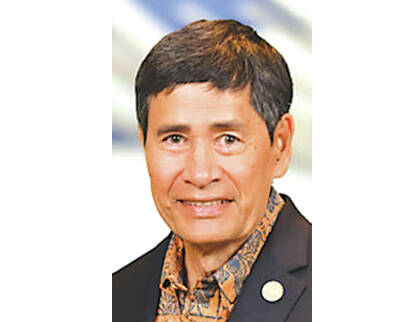DHHL ramps up homestead development
Jan. 24—A Native Hawaiian homestead development pipeline has swelled to about 6,000 lots costing $1.2 billion midway into a three-year effort to use a historic $600 million appropriation from the state Legislature in 2022.
The state Department of Hawaiian Home Lands, which initially faced skepticism over whether it could use all the funding by an imposed June 30, 2025, deadline, is now seeking more money from lawmakers for statewide homestead lot development.
“I know that it’s very unlikely that we’ll get $600 million from you folks this year,” DHHL Director Kali Watson told members of two Senate committees during a Jan. 9 briefing. “But I think it’s important that you see that we’re not just talking about use of the (2022 appropriation) and it ends there. It’s really a matter of where do we go in the future.”
For decades the agency has developed homestead lots at a rather abysmal pace, partly due to low funding and high costs for putting in infrastructure on DHHL land outside urban areas and not well suited for homestead construction.
Roughly 28,700 DHHL beneficiaries are on a waitlist for homesteads, and more than 2,000 applicants have died while on the list, according to an analysis by the Honolulu Star-Advertiser and ProPublica.
The homestead program, created in 1921 by federal law and administered by the state since 1959, has provided about 10,000 leases to beneficiaries, who must be at least 50% Hawaiian to receive a lease from DHHL. Land leases cost $1 a year, and beneficiaries pay for their own homes, which can be on residential, agricultural or pastoral lease lots.
State lawmakers, working with a big budget surplus in 2022, appropriated $600 million largely to boost homestead development through a bill that became Act 279, also known as the Waitlist Reduction Act.
An initial plan from DHHL in 2022 estimated that $540 million could be used to produce about 3,000 lots, with the funding balance used for other beneficiary assistance.
Watson’s recent presentation showed that DHHL anticipates being able to use $599.9 million of the existing appropriation before the current fiscal year ends June 30, including $193 million encumbered in the prior fiscal year and $407 million proposed or projected to be encumbered this fiscal year partly to acquire land and produce 2,180 lots.
DHHL also has lined up proposed homestead development projects costing $626 million that could be used next fiscal year to produce 3,659 lots if the agency can obtain additional funding from lawmakers.
“We are going to be using up the $600 million,” Watson said at the Jan. 9 briefing to members of the Senate Committee on Ways and Means and the Committee on Hawaiian Affairs. “We do need more money, so we’d hope that you guys consider it.”
Watson and other DHHL leaders made a similar presentation to the House Finance Committee on Jan. 12.
The dramatic ramp-up in DHHL homestead development projects has occurred since Watson was appointed to head the agency by Gov. Josh Green in February.
Watson, a former nonprofit affordable-housing developer who was DHHL’s director from 1995 to 1998, has largely turned to private developers and landowners to help the agency line up new homestead projects, especially ones on land with lower infrastructure development costs.
Under Watson’s strategy, DHHL has issued three requests for proposals that have led to deals for the agency to buy land more suited for development and have private developers produce the lots.
Such deals, some of which are tentative and subject to Hawaiian Homes Commission approval, have led to the agency’s pipeline of planned projects swelling in recent months.
One project added to DHHL’s homestead development plan since December involves buying 300 acres on Kauai from Grove Farm Co. for $20.7 million this fiscal year using some of the $600 million appropriation.
Watson told the two Senate committees that this land near Lihue can be used for 1,200 lots in the long term and that an initial 240-lot phase is proposed for next fiscal year and would cost $71 million if funding can be obtained.
A similar recent addition to DHHL’s spending plan involves buying land on Hawaii island for $9 million this fiscal year and then arranging to develop 296 lots for about $57 million next fiscal year at proposed projects called Honokaa Homesteads and Lehua Villages.
Another project added to the list since December would create 600 lots in Panaewa not far from Hilo where Watson said Hawaii County plans sewer system upgrades that will make it more feasible to develop land owned by DHHL. This project, which previously was a longer-term vision, is estimated to cost $148 million that the agency proposes for funding next fiscal year.
Watson told the two Senate committees that his staff, which includes close to 40 new employees hired to help implement Act 279, has been able to identify more cost-efficient projects.
In some cases, that has led DHHL to push back other projects into the next fiscal year subject to more funding


